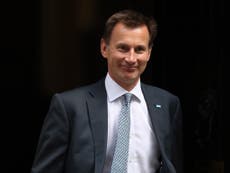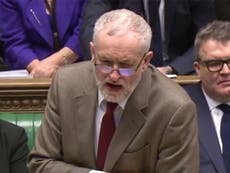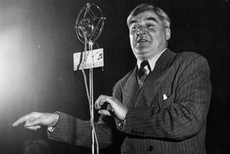Labour’s history of division should remind members of what unites them
The clash between Nye Bevan and Hugh Gaitskell in the 1950s was as bitter as anything in the 1980s or today: a Labour historian and MP on the echoes and the lessons


Prime Minister Clement Attlee’s Labour Cabinet met twice on Monday, 9 April 1951. The Chancellor, Hugh Gaitskell, was proposing charges for teeth and spectacles on the NHS in his Budget the next day. The NHS’s founder, Aneurin Bevan, by now Minister of Labour, bitterly opposed him, arguing that the fees would undermine the principle of a free health service. So intense was the dispute that the Cabinet Secretary, Norman Brook, only – later – included the discussions in the official Cabinet Minutes, and then in a moderated tone.
Attlee was in hospital with an ulcer, but, Herbert Morrison, presiding in his absence, visited his bedside and brought back the message that the Prime Minister backed Gaitskell. Even at this late stage, Bevan proposed two possible compromises: an increased contribution to the NHS from the National Insurance Fund or reducing the amount of the proposed budget surplus. But Gaitskell was immovable, and Bevan resigned. Labour lost the subsequent general election and descended into internal warfare, out of power for 13 years.
Labour’s 1950s infighting is often seen as “consolidation” versus “advance”: whether to maintain the gains of the Attlee government and turn attention to private consumer affluence or to drive the nationalisation programme further forward. But this was not a clear divide. Bevan is not easily categorised as an “advancer”: when the Labour Party had discussed further nationalisation at Dorking in May 1950, he had argued for consolidation.
There is no denying a personal rivalry between Bevan and Gaitskell. Gaitskell’s Budget drove Bevan out of the government and made him less of a rival for the succession to Attlee. Yet the disagreement was far broader. The Korean War had broken out in June 1950, a proxy conflict between the Soviet Union and the US, and fears of a third world war led the American government to put pressure on the UK to vastly increase its defence spending. Gaitskell proposed a rearmament programme of £4,700 million. Bevan had seen the Atlantic alliance as a financial and military necessity, but he now saw American foreign policy as driven by ideological antagonism towards communism. Bevan also opposed the projected spending in practical terms – that such a large amount of money simply could not be spent on armaments over three years, and he was proved right.
There is still much to learn from the Bevanite-Gaitskellite clashes. Those within parties who disagree too often forget what they have in common. There was little between Bevan and Gaitskell on domestic policy. The policy document both men agreed on in 1957, Industry and Society, limited nationalisation proposals to those industries put back into private hands by the 1951-55 Churchill Government: iron and steel; and road haulage. Rather, it was on foreign policy that disputes flared. Gaitskell was a firm supporter of Britain’s alignment with the US; Bevan favoured a “third force” foreign policy over an alliance with one of the two superpowers, drawing on his own contacts with non-aligned countries: Tito’s Yugoslavia and Nehru’s India; he opposed the creation of a South East Asia NATO in April 1954, and West German rearmament. How feasible Bevan’s strategy was is a moot point, but fresh thinking should never be dismissed out of hand: Bevan’s worry that the Cold War’s geopolitics placed emphasis on arms rather than tackling world poverty was prescient.
Parties always need to be looking ahead of their time. Tony Crosland, a Gaitskellite, published The Future of Socialism in 1956, proposed moving beyond a traditional model of board-run nationalised industries: government should instead buy shares in the 200 or so largest companies in the country, and share profits between private shareholders and the public.
Such free thinking should never be seen as at odds with promoting unity. When Labour regained power in 1964, the new Prime Minister was Harold Wilson, who had resigned with Bevan in 1951 before moving towards Gaitskell in 1955 to become Shadow Chancellor. It was fitting that it was someone who had straddled the divide.
Nick Thomas-Symonds is Labour MP for Torfaen, and author of Attlee: A Life in Politics and Nye: The Political Life of Aneurin Bevan




Join our commenting forum
Join thought-provoking conversations, follow other Independent readers and see their replies